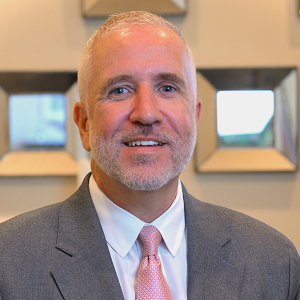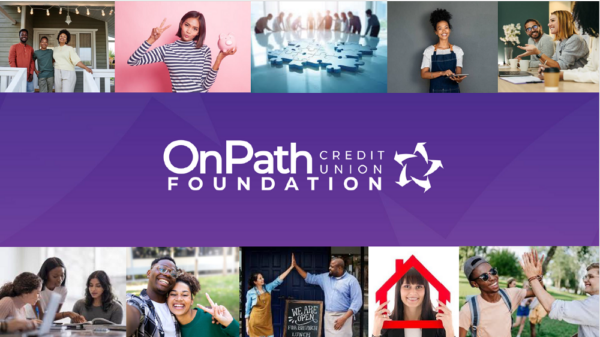A lot of the things we do as a credit union are numbers-driven, so I’m trying to create metrics the foundation can use to show our leadership the significance of what we do and the value-add we bring.
Natural disasters leave behind more than physical devastation; they also create opportunities for those with a heart for service to make a difference.
For Jay Huffstatler, it was Hurricane Katrina that launched the Mississippi native and mortgage banker into the non-profit world, where he now is the newly minted executive director of the OnPath Foundation, the philanthropic arm of OnPath Federal Credit Union ($1.0B, Metairie, LA).
Huffstatler has been in the role since November 2024, but he brings to it 20 years of experience that began with a role as FEMA liaison soon after Katrina made landfall in 2005.

He also worked with BP after the Deepwater Horizon spill and then with a series of foundations and non-profits — including the Red Cross and Habitat for Humanity – connecting needs and resources to address issues plaguing underserved communities.
Today, Huffstatler helps communities across Southeast Louisiana build financial resilience. In this Q&A, Huffstatler shares his perspective on joining the credit union industry, the role of a foundation within a financial institution, and how his background in non-profit work has shaped his approach at OnPath.
What drew you to the role of executive director at OnPath Foundation?
Jay Huffstatler: Following Hurricane Katrina, I had the opportunity to work for a foundation on the Mississippi Gulf Coast, administering recovery projects and grants. That experience showed me the unique impact a foundation can have in a community.
Unlike traditional non-profits, foundations operate with a strategic vision that can provide long-term, sustainable support. When I learned about the opportunity at OnPath Foundation, it felt like a perfect fit. Its focus on financial education, homeownership, and entrepreneurship aligned with the work I had done in disaster recovery and non-profit leadership.
Additionally, OnPath’s leadership had been looking for someone to take the foundation to the next level. It had been doing great work but needed a dedicated executive director to fully realize the foundation’s initiatives. That level of organizational commitment made this role even more appealing to me.
How do the credit union and the foundation complement each other?
JH: The foundation serves as the philanthropic arm of OnPath credit union. While the credit union focuses on providing financial services to its members, the foundation extends that impact by addressing systemic issues that prevent financial stability and growth in underserved communities.
My role is to ensure our initiatives align with OnPath’s broader strategic goals while also strengthening the credit union’s visibility and reputation within the community. By operating in tandem, we create a more holistic approach to financial empowerment, supporting both the members of the credit union and the broader community.
How do you get buy-in from the board and staff for the foundation’s initiatives?
CU QUICK FACTS
OnPath FCU
HQ: Metairie, LA
ASSETS: $1.0B
MEMBERS: 84,664
BRANCHES: 15
EMPLOYEES: 265
NET WORTH: 10.3%
ROA: 2.41%
JH: I focus on educating our board and staff about the tangible benefits of our initiatives — for not only the community but also the credit union. I regularly communicate with leadership about how our work strengthens member relationships and aligns with OnPath’s strategic vision.
We also ensure leadership plays an active role in our events and community engagement. When employees and board members see the direct impact of our work, their enthusiasm naturally follows, strengthening our collective commitment to the foundation’s goals.
And, internally, we’ve made it easier for staff to contribute to the foundation’s mission. Now it’s more like the United Way model. Staff donates to the foundation instead of directly to a dozen different organizations.
What are the foundation’s key programs? How do they help build generational wealth?
JH: We have three core pillars that guide our work. The first is financial education, which includes partnerships with local schools to provide financial literacy programs. Louisiana requires high school students to take a financial literacy course before graduating, and we are working to ensure every student has access to such at no cost.
The second pillar is homeownership. We’re launching a first-time homebuyer program that provides down payment assistance grants to members who secure their mortgage through the credit union. This initiative is designed to help families overcome one of the biggest barriers to building generational wealth.
Finally, we focus on entrepreneurship. We are hosting a speaker series featuring successful entrepreneurs, including an upcoming event with Daymond John from Shark Tank. Our goal is to inspire and equip local entrepreneurs with the tools they need to succeed. These initiatives work together to create opportunities for financial empowerment, independence, and stability across our community.
What is the culture like at OnPath? How does it compare to your expectations?
JH: I initially expected a more rigid, corporate environment — something similar to what I experienced working in banking years ago. However, I’m pleasantly surprised by how casual and mission-driven the culture at OnPath has been.
There’s a real sense of collaboration and community that I wasn’t necessarily expecting. It’s been refreshing to work in an environment that prioritizes both business strategy and social impact in a way that feels authentic and approachable.
Have there been any surprises?
JH: Beyond the culture piece, not really. Successful engagement comes down to building trusting relationships with stakeholders, whether they’re donors or volunteers or community leaders.
The same applies to the foundation. A lot of the things we do as a credit union are numbers-driven, so I’m trying to create metrics the foundation can use to show our leadership the significance of what we do and the value-add we bring from the credit union to the community.

What advice do you have for someone transitioning from another industry into a credit union?
JH: Assess how your skills align with the credit union’s mission. If you have experience in relationship-building, community impact, and stakeholder engagement, those skills are highly transferable. I play to my strengths as a bridge-builder. That means using my non-profit experience to act as a bridge between the credit union’s business objectives and the foundation’s philanthropic and fundraising goals.
Understanding financial literacy and business strategies is also crucial, but you don’t have to be an expert from day one. Be open to learning and focus on how your background can add value.
The credit union movement blends the best of the non-profit and financial worlds. It’s a mix of mission-driven service and business strategy. If you’re coming from outside the industry, take time to understand the credit union philosophy — it’s about people helping people, and that mindset will guide your success in this space.
Credit unions are sometimes called an industry and sometimes a movement. Which is it to you?
JH: To me it’s a blend of both, which is a really cool place to be.
Make Leadership Development A Priority In 2025. Callahan Executive Roundtables give C-suite executives the chance to talk with and learn from like-minded leaders about industry hot topics, roadblocks, strategies, lessons learned, and more. Give your leaders the gift of inspiration through collaboration. Learn more today.
This interview has been edited and condensed.